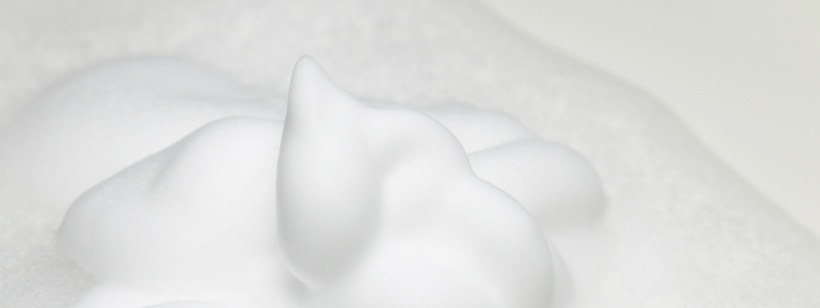Defoamers are additives that reduce the amount of foam created by industrial solutions. Excess foam can cause numerous issues during the production of these solutions, such as preventing containers from being filled all the way or damaging equipment. Thus, defoamers prove to be very useful throughout the manufacturing process. Certain detergents also contain defoamers, because an excess of foam may make them less effective at cleaning.
History of Defoamers
Before jumping into the different types of defoamers, let us briefly discuss their history. Some of the earliest defoamers include kerosene, fuel oil, vegetable oil, and even milk and cream. In the 1950s, people began testing out silicone-based defoamers. These were effective but created surface disturbances in some cases, such as in the production of paint.
During the 1970s, hydrophobic waxes in oil began to be utilized as defoamers. They worked extremely well, but unfortunately; oil started to become too costly due to the oil crisis of 1973. This led to an increase in the popularity of water-based defoamers.
Today, silicone-based defoamers are still used. The next section of this blog post will discuss these, as well as several other common types of defoamers.
Types of Defoamers
- Silicone-Based
Silicone-based defoamers consist of silicone oil, either polydimethylsiloxane or modified siloxane, as well as hydrophobic silica in a water-based or oil-based solution. Due to silicone oil’s low surface tension, silicone-based defoamers can easily spread and break open foam bubbles. This type of defoamer is often used in the crude oil and oil refining industries. - Oil-Based
Oil-based defoamers contain an oil carrier, such as mineral oil or vegetable oil, and a wax or hydrophobic silica to increase efficacy. They may also include surfactants, which help to enhance emulsification and the defoamer’s ability to spread. - Water-Based
In water-based defoamers, oils, such as mineral or vegetable oil, and waxes, such as esters or fatty alcohols, are mixed with a water base. This type of defoamer is an effective deaerator. - Powder-Based
Powder-based defoamers are similar to oil-based defoamers, except that they contain a carrier such as silica. They are used in plaster, cement, and powdered detergent. - Alkyl Polyacrylates
Alkyl polyacrylates are defoamers that may be employed in non-aqueous conditions when the disruption of surface foam is not a priority, but air release is. This kind of defoamer usually contains a solvent carrier- for example, petroleum distillate.
Looking for a Defoamer?
After reading this blog post, you may be wondering where you can purchase defoamers. You’ve come to the right place! Tidal Washers offers an industrial-strength liquid defoamer that is perfect for decreasing the amount of foam produced by cleaning solutions. If you would like to learn more, please contact us by emailing info@tidalwashers.com, or by calling 800-563-1305.

